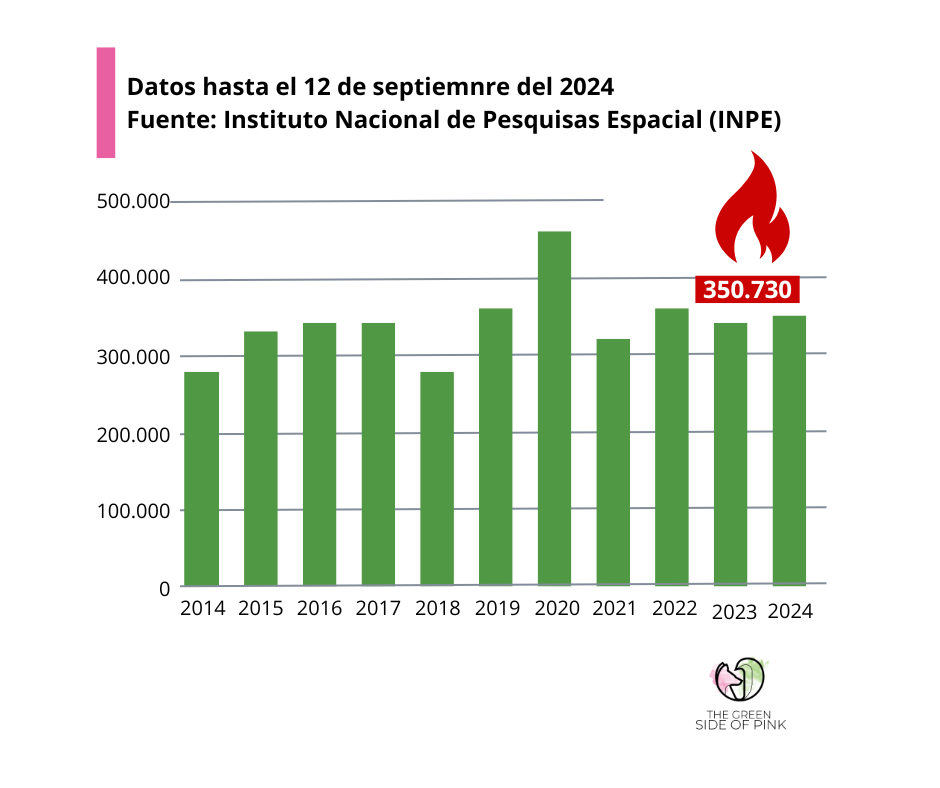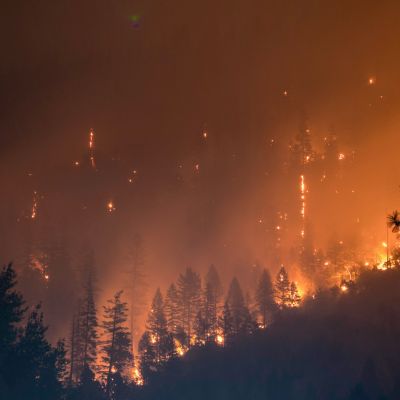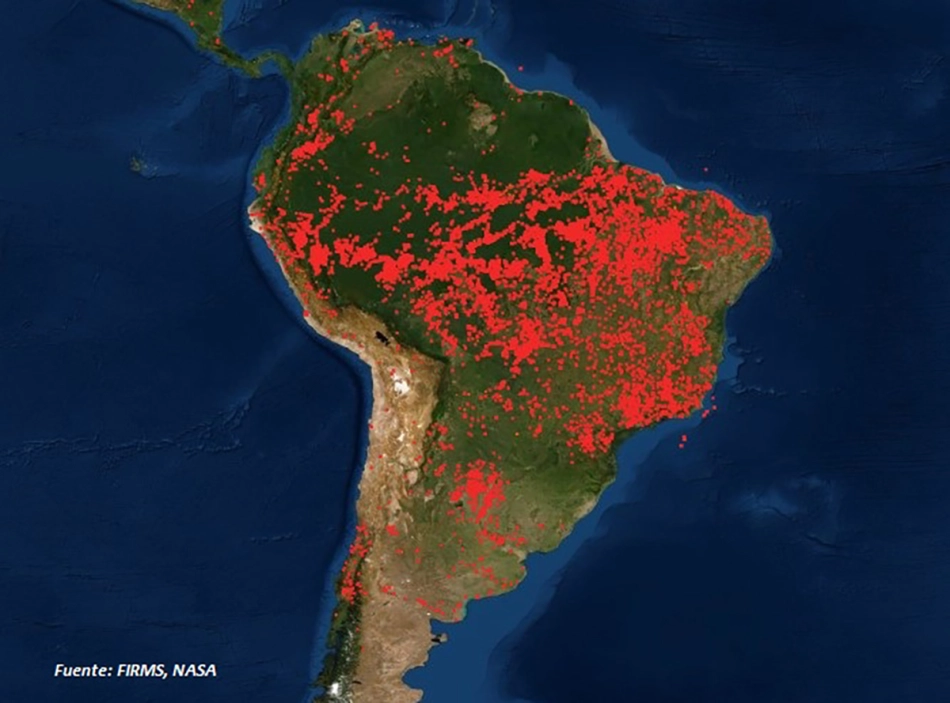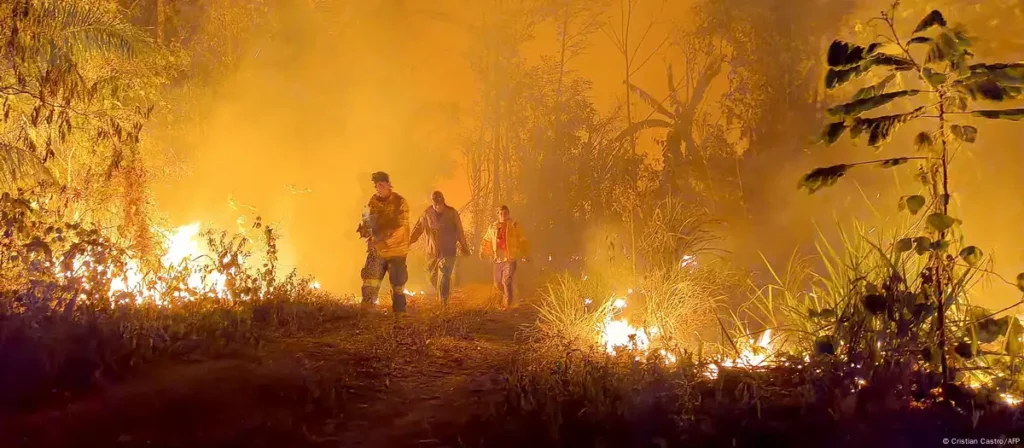The forest fire crisis in Latin America is hitting hard in countries such as Bolivia, Brazil, Colombia, Paraguay, Peru and Argentina. This often overlooked threat only comes to the forefront when fires devastate forests, savannahs and entire communities. At such times, the world turns its attention back to climate change and the profound consequences that human activity is having on our planet.
This year, Bolivia has seen 6.9 million hectares burn, while in Argentina, around 40,000 hectares have burned, affecting native forests as well as fields and tourist areas. According to the Global Forest Fire Information System, Brazil has recorded fires on 46.1 million hectares. Paraguay has lost more than 353,000 hectares, Colombia 7,029 hectares, and in Peru the flames have consumed nearly 5,000 hectares. Ecuador recorded at least 36,399 hectares burned in forest fires so far this year.
Climate change is not only a cause but also a consequence of forest fires in Latin America. Brazil’s Amazon, one of the wettest regions on the planet, has become highly ‘flammable’ due to rising temperatures and prolonged droughts. However, it is not only climate change that is driving this crisis. Irresponsible human actions, such as uncontrolled agriculture and illegal logging, aggravate the situation and are among the main causes of the massive deforestation we are witnessing in Latin America.

Source: National Institute of Special Taxes (INPE)
Causes of fires
Intentional
This category includes illegal practices such as agricultural burning carried out by some farmers with the aim of restoring soil fertility. It is also due to illegal activities, such as logging or mining, where forest areas are razed to facilitate access to natural resources without attracting the attention of the authorities.
Other frequent causes of arson include protest actions or the intention to destabilise governments or companies operating in forest areas. Some groups use fire to displace communities or favour urban expansion, where forests are seen as obstacles to the development of real estate projects.
Pyromania, a condition in which a person experiences pleasure or excitement at the sight of fire, is added as a cause of arson. It is a psychological disorder in which there is an uncontrollable desire to set fires and a feeling of emotional gratification once set without measuring the consequences of these acts.

Accidental (unintentional)
These can be caused by poorly extinguished recreational campfires, throwing lit cigarettes on vegetation or leaving refracting objects, such as glass, on the forest floor. The latter can start a fire in the glare of the sun. There are also authorised agricultural burns where fire control is lost.
The causes of fires due to natural causes are those produced by atmospheric phenomena such as meteorites, weather, sun, temperatures (such as summer in the case of Argentina and Brazil), and El Niño and La Niña in Peru and Ecuador.
It is important to note that people responsible for setting forest fires face legal penalties that vary from jurisdiction to jurisdiction. In most countries, laws against this type of crime provide for prison sentences ranging from six months to ten years, depending on the severity of the fire, the damage caused and whether it was intentional or the result of negligence, an example of which is the new provisional measure to be applied in Brazil.
Environmental and social consequences of forest fires in Latin America What is their global impact?
The Amazon, with an area of 7.7 million km² (more than 13 times the size of the Iberian Peninsula), is the largest tropical forest in the world. Its forest area covers 6.7 million km², representing a third of the planet’s forests. It is home to the world’s largest river system, with freshwater ecosystems including rivers and wetlands.
It also contains 25% of terrestrial biodiversity and the highest diversity of fish species in any river system. Protecting the Amazon is essential not only for environmental reasons, but also to ensure a sustainable future.

The Mexican Ministry of Environment and Natural Resources has identified the main environmental consequences of forest fires. These include the loss of habitats for terrestrial wildlife, the greenhouse effect and soil degradation. The massive death of plants, which are essential for oxygen production, also has a major impact on the climate.
Forest fires in Latin America are intensifying the greenhouse effect. This contributes to the increase in global temperature and accelerates global warming. The devastation of forests not only eliminates wildlife habitats, but also severely alters food chains.
In the wildlife of regions such as Bolivia, Brazil and Paraguay, the most affected species are crocodiles, jaguars and the hyacinth macaw, the world’s largest parrot. In 2020, a series of fires in the Pantanal – a vast floodplain spanning parts of Brazil, Paraguay and Bolivia – resulted in the death of 17 million animals.
One of the “invisible” effects of fires in Latin America is the disruption to the formation and recovery of water tables. These are crucial for life on Earth, as they supply water to plants through their roots.

Effects of fire on local populations and biodiversity
Fires are also a serious problem for human communities, especially indigenous communities. The air pollution generated by the ash not only affects the health of their inhabitants, but also threatens their traditional livelihoods. This is because their lands are their cultural, spiritual and livelihood assets. Governments often marginalise indigenous communities during the planning and implementation of forest fire prevention and management policies. Not only are they not involved, but they have to vacate their lands. It is therefore often suggested that there is an economic interest in the “obligation” to evict communities.
Finally, the Amazon, an ecosystem necessary for life on earth and for the planet, is at one of the most critical moments in history. In the last 39 years more than 88 million hectares have been cleared. This implies, among other things, the danger of the disappearance of the Amazon’s biological diversity and, as a consequence, a decrease in the availability of food for neighbouring populations. Taking this scenario into account, it is more essential than ever to strengthen conservation and restoration policies.
Other environmental consequences
During fires, various chemical pollutants are also released, such as heavy metals, hydrocarbons and organic chemicals. These pollutants can be absorbed by water, compromising the health of aquatic organisms and the people who consume the water.
In addition, the accumulation of nutrients, such as nitrogen and phosphorus, in the water, due to burnt organic material, can lead to eutrophication. This phenomenon results in algal blooms, which in turn affect the health of aquatic ecosystems. Landscape transformation caused by fires can alter the flow of water through ecosystems, damaging habitats and biodiversity.
The weakening of the economy is one of the main problems caused by forest fires in Latin America
One of the most visible environmental consequences of forest fires is the destruction of timber resources, which severely affects the forest industry. As a result, many people lose their jobs, causing economic instability in local communities that depend on timber marketing for their livelihoods.
In terms of tourism, scheduled activities have to be postponed, and access to areas of tourist interest is prohibited. This considerably reduces the revenues of this industry. In addition, for governments, the restoration of wildlife and the recovery of ecosystems devastated by fires represents a high cost.

In Peru, for example, the Ministry of Agrarian Development and Irrigation has reported that nearly 3,000 families have been affected by fires this year. As a result, the government has implemented support measures, distributing fertilisers, seeds and island guano to help them.
The sectors most affected are those involved in rural and agricultural activities. One example is Quito, Ecuador, where power outages of up to 14 hours have been recorded. This situation interrupts the supply of goods and affects transport, which in turn generates serious economic problems for the region.
Policy responses to a growing problem
The role of the state is crucial at times like these, both to protect wildlife and human life. Wildfire prevention and control strategies, as well as wildfire eradication, are often the most common responses implemented by countries. These measures are carried out in partnership with government, civil society organisations and volunteers.
However, one of the main criticisms of these responses is that many policies focus solely on fire suppression. In this way, the effects of global warming and the accumulation of fuels in the landscape are neglected. In other words, in the face of public pressure, governments only prioritise immediate fire suppression without implementing forest and land policies that address the underlying causes of the problem.

Measures that address the root of the issue in the long term are needed to prevent future fires. In other words, if fires are prevented from occurring, they will not need to be put out, nor will large sums of money need to be spent on them. Most importantly, there will not be the environmental consequences that are irreparable.
The role of NGOs in forest fires
It’s interesting to understand the role of organisations and NGOs that work on a daily basis to prevent these problems. The Expert Group on Forest Fires in Latin America and the Caribbean is composed of fire managers from related ministries and agencies. Their aim is to advise, guide and support international collaboration and policy development related to wildfires.
The Nature Conservancy works with communities to promote education and resources to prepare for and reduce the risk of wildfires. A tree planted is an NGO helping to mitigate forest loss around the world. It proposed the Million Tree Challenge to encourage companies and individuals to fight climate change. The Wilderness Society conserves connected landscapes, addressing the problems arising from the climate crisis and educating communities in conservation practices.
The solution is not simple and will not be ready overnight, but it is vital to work within a framework of climate and environmental policies focused on restoring and protecting ecosystems. This must be accompanied by the implementation of new technologies for sustainable management and a sound disaster risk management strategy.





